Sound: 









Value: 









(Read about our ratings)
Measurements can be found by clicking this link.
 Reviewing the CCA C10 earphones a few months ago led me down a rabbit hole—and I’m glad it did. The CCA C10s incorporate four balanced-armature drivers and one dynamic bass driver per earpiece, yet they cost just $40.99 (all prices USD). After I ordered those from Amazon, I noticed another “Chi-Fi” model that was perhaps even more appealing: the KZ x Crinacle CRN earphones. Initially known as the ZEX-Pro earphones, the $38.99 (and often lower on Amazon) CRNs incorporate a single balanced-armature tweeter, a 10mm dynamic driver for the bass, and an electret electrostatic driver (basically a miniaturized, permanently charged version of the giant panel drivers found in MartinLogan and Quad planar speakers) for the mids.
Reviewing the CCA C10 earphones a few months ago led me down a rabbit hole—and I’m glad it did. The CCA C10s incorporate four balanced-armature drivers and one dynamic bass driver per earpiece, yet they cost just $40.99 (all prices USD). After I ordered those from Amazon, I noticed another “Chi-Fi” model that was perhaps even more appealing: the KZ x Crinacle CRN earphones. Initially known as the ZEX-Pro earphones, the $38.99 (and often lower on Amazon) CRNs incorporate a single balanced-armature tweeter, a 10mm dynamic driver for the bass, and an electret electrostatic driver (basically a miniaturized, permanently charged version of the giant panel drivers found in MartinLogan and Quad planar speakers) for the mids.
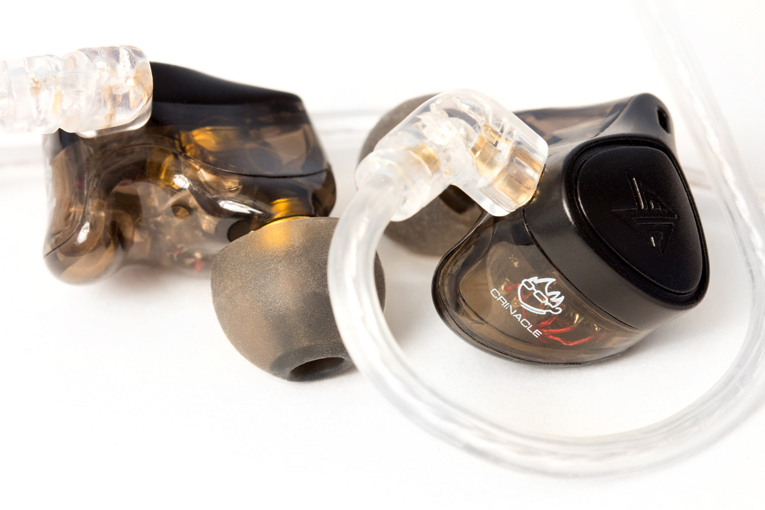
At least as important as the driver configuration is the CRNs’ backstory. They’re made by Chinese manufacturer KZ (Knowledge Zenith) and tuned by Crinacle—otherwise known as Colin Ako, the founder of In-Ear Fidelity, a site that specializes in measuring earphones. He’s worked as a tuning consultant with some other manufacturers, but the CRN model is the least expensive of his efforts to date. Now, I’ve also worked as a tuning consultant for manufacturers, and I know other consultants who do the same thing. I don’t know Crinacle, but he’s the only consultant I know of who has created his own logo, which at least from a marketing perspective, puts him in a class of his own. (It’s a good logo, too, and it’s featured on the earphones.)
Here’s where the rabbit hole begins—the more I get into Chi-Fi, the more I realize there’s a whole subculture of dudes who are ultra-passionate about earphones, and who are dedicated followers (or critics) of Crinacle. I find this phenomenon simultaneously fascinating, comforting, disturbing, and entertaining. I encourage you to follow me down the rabbit hole, starting with his video explaining what he was going for with the CRNs. I guess he’s a competitor of mine in some sense, but I can’t help liking the guy. And I see this as a much more interesting, welcoming, and benevolent subculture than, say, audio enthusiasts who champion manufacturers striving to one-up competitors in the effort to create the most outrageously expensive audio gear.
Anyway, the CRNs follow the pattern of most Chi-Fi earphones. They’re affordably priced, they have lots of drivers, and they use over-the-ear cable routing, which tends to hold the earphones in place more securely and ensure more reliable seals in the ear canals. Also, like many other Chi-Fi models, the CRNs have replaceable cables, using a standard two-pin connector.
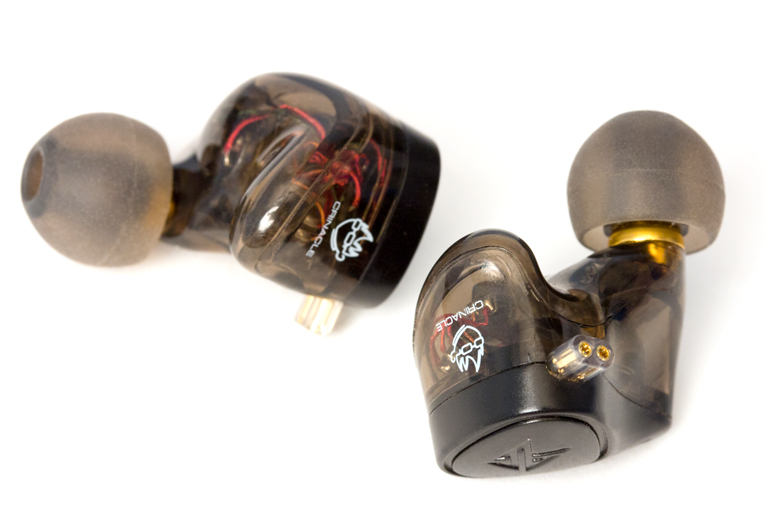
The CRNs are rated at 25 ohms impedance, with a sensitivity of 104dB with a 1mW signal. So they should be easy to drive no matter what source device you use. They’re available with or without an inline microphone; whether that costs extra is hard to predict given Amazon’s puzzling price pfluctuations. They’re available in black or rose gold.
In the box
If I recall correctly, the CRNs came with three sets of silicone tips. Because none of them fit me, and I had to substitute SpinFit CP100 XL tips, I didn’t realize I’d misplaced the tips until I started working on this review. The included cable measures 1.2m (47″) and has a 3.5mm (1/8″) stereo plug on the source end, and a two-pin connector for each earphone.
Use
Not much to talk about here. Once I put on the SpinFit tips, the CRNs fit me pretty much perfectly and stayed secure during my daily dog walks. They played plenty loud plugged straight into my Samsung Galaxy S10 phone, although for most of my evaluation, I used an EarMen Eagle DAC-headphone amp.
Sound
After I read Crinacle’s article about how he voiced the CRNs, I couldn’t resist buying a set, especially at such a low price. But my 2022 queue for headphone and earphone tests suddenly got very full, so I had them for maybe four months before I wrote this review. And in that time, I listened to them a lot, because they were comfortable and I liked the sound.
“Blame It On Me,” from Bonnie Raitt’s new Just Like That . . . (24-bit/96kHz FLAC, Redwing Records / Qobuz), kinda tells the CRNs’ story all on its own. The best thing about these earphones, by far, is their satisfying tonal balance. There’s enough bass to give them a full sound, but not enough to sound boomy or obscure other parts of the audio spectrum. Through the CRNs, Raitt’s voice sounded wonderfully natural, smooth, intimate, and almost uncolored, with one minor exception I’ll get to shortly. I especially loved the sound of the Hammond B3 (I assume) organ; it’s not a difficult instrument for an audio system to reproduce, but the CRNs captured the huge sense of space on the organ in this mix. This made for an aurally delicious contrast with Raitt’s voice and her Stratocaster licks, neither of which has a lot of reverb or ambience on this recording.
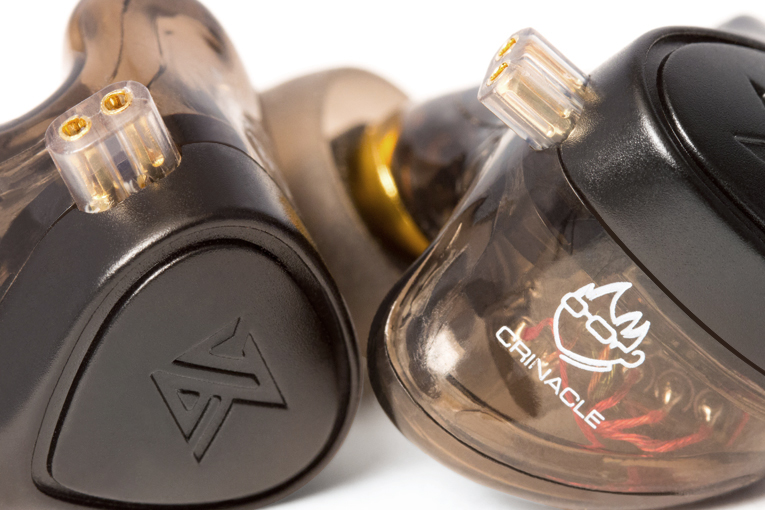
The one place I heard a bit of coloration was in the mid-treble, which seemed slightly emphasized. But not by a lot—I thought it sounded like a fairly mild boost across maybe half an octave or so. This gave Raitt’s voice a subtle hint of spittiness on her peaks, and it also made the ride cymbal sound more like what the drummers in 1980s hair-metal bands used, and certainly brighter than the ride cymbals that would typically be used on a recording like this. I have to say, though, that while I noticed this flaw, it didn’t bother me, and it’s a less obvious idiosyncrasy than most earphones have.
I heard a little bit of this on Viktoria Mullova and Alasdair Beatson’s Schubert: Violin Sonata in A Major, Fantasie in C Major and Rondo in B Minor (24/192 FLAC, Signum Records / Qobuz); the violin sounded a little bright and hard, even though, according to the liner notes, it was strung with gut strings, which sound softer than steel strings. Not surprisingly, the higher and louder the note was, the more I noticed. But still, on, say, the second movement from the sonata Scherzo Presto, I loved the sense of warm, intimate ambience I heard from the piano and violin. I’m not sure where this album was recorded, but I got a strong sense that it was in a small hall or a large studio, and definitely a place where someone had paid a lot of attention to the acoustics. It’s pretty remarkable that you can get this kind of sound quality for less than $40.
My ears came to a similar conclusion when I listened to straight-ahead jazz, the genre I spend the most time listening to. On “Queen of the South,” from trumpeter Ron Miles’s Rainbow Sign (24/96 FLAC, Blue Note / Qobuz), the CRNs did a fantastic job of picking out the individual contributions of the electric guitar, piano, drums, bass, and trumpet (or probably cornet). Every instrument sounded distinct, and pretty much the way I’d expect the instruments on a recording in this genre to sound—clear and clean, but never really asserting themselves or fighting the other instruments for a bigger piece of the sonic pie. I especially loved the way Thomas Morgan’s double bass sounded: round, warm, and full, yet so distinct it would have been easy for me to transcribe his lines. But again, the cymbals seemed a little too bright; when drummer Brian Blade tapped on the bell of his ride cymbal, for example, it really jumped out of the mix. After spending about half an hour with Rainbow Sign, my ears got more used to this sound, but it never faded from perception entirely.
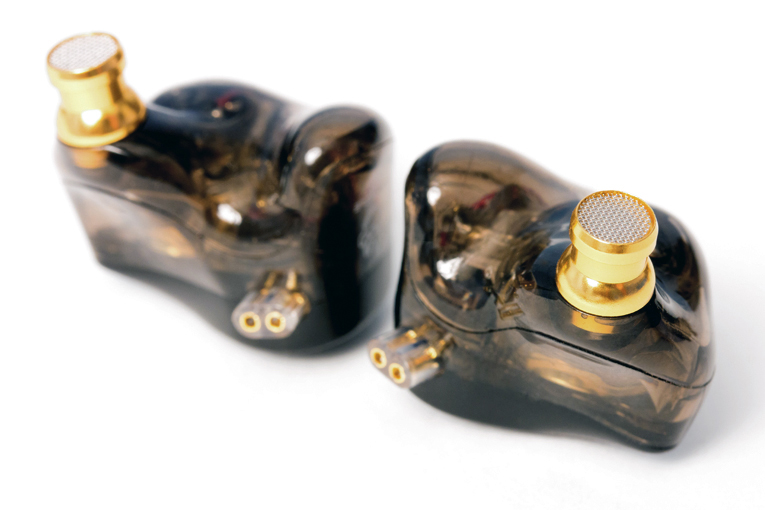
Wanting to hear how the CRNs handled heavier material, I put on one of the heaviest albums I know of: To Mega Therion, by the legendary Swiss death-metal pioneers Celtic Frost (16/44.1 FLAC, Noise Records / Qobuz). This told me that the CRNs are definitely not basshead earphones—they didn’t seem to have the low-frequency extension or oomph to properly convey the awesome kick-ass-ness of the insistent kick drum and dense guitar/bass unison runs of “Eternal Summer.” But if they did, they might not have sounded so good on the previous cuts I mentioned. I did hear that little band of extra brightness, depending on the tune. “Eternal Summer” was pretty crankable, but on “The Usurper,” the snare drum and cymbals sounded a little bright, and the thick, thrashy guitar on “Jewel Throne” sounded more like a Stratocaster than the fatter-sounding humbucker-equipped axes that bandleader Thomas Gabriel Warrior favored.
Comparison
I compared the CRNs mainly with the vastly more expensive Campfire Audio Holocenes ($649) and the comparably priced CCA C10s.
On jazz singer Sue Matthews’s recording of “Easy to Love” (Love Dances, 16/44.1 FLAC, Sir Records / Qobuz), the CRNs’ little bitta brightness seemed tame compared to what I heard from the Holocenes; the latter seemed to elevate the cymbals in the mix even more than the CRNs did, although still not to the point where I’d describe the sound as trebly. This somewhat more elevated treble (and/or reduced bass) made the Holocenes sound a little drier and gave the Campfires the impression of having more detail. As a double bass player, though, I know which one of these earphones got the bass more right on this recording: clearly the CRNs, which, as I noted above, struck a nearly perfect balance of fullness and upper-bass/lower-midrange definition.
The C10s definitely made the vocals sound cruder and more sibilant than the other earphones did, with a little more sibilance and what sounded like a slight “cupped hands” coloration. Still, the C10s sounded good overall, with soundstaging that matched the slightly cheaper competitor, and came close to the colossally more expensive competitor.
Conclusion
The KZ x Crinacle CRNs aren’t perfect, but I can’t think of any earphones that are, and if there are any perfect, or near-perfect, earphones (I dunno, maybe the Audeze Euclids?), they probably cost more than $1000. But you can go buy two or three or four of these Chi-Fi earphones for less than what a lot of companies charge for headphone cables. You’ll be rewarded with countless hours of listening adventures, and if you get good ones like the CRN and the C10 earphones, zero hours of crappy sound.
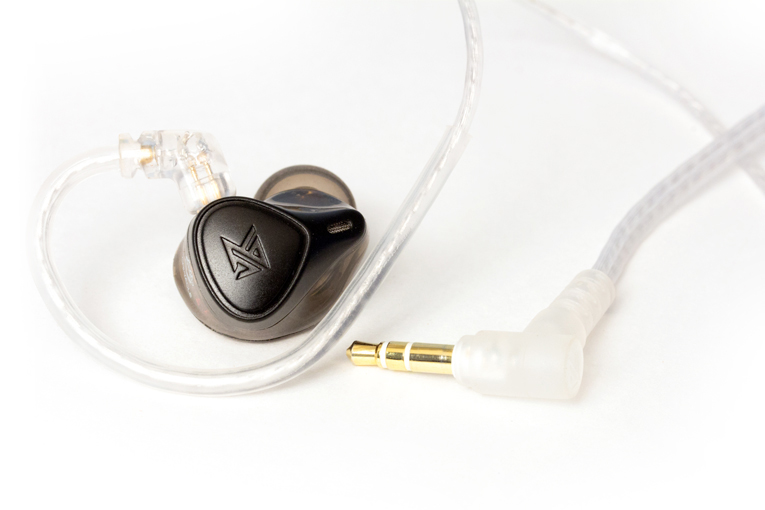
I got into audio back when manufacturers were still experimenting to find the right formulas for dependably decent sound—and long before they started cranking out amps and DACs that cost more than a new economy car. Back then, the audio industry focused on creating tools for music lovers rather than conjuring up baubles to dazzle conspicuous consumers. To me, these Chi-Fi earphones capture that spirit of three-plus decades ago. I’ll be reviewing more of them in the coming months, and I strongly suggest you check out at least one or two for yourself. The KZ x Crinacle CRNs are a great place to start.
. . . Brent Butterworth
Associated Equipment
- Smartphone: Samsung Galaxy S10
- DAC-headphone amplifier: EarMen Eagle
KZ x Crinacle CRN Earphones
Price: $38.99.
Warranty: One year.
KZ Acoustics
Website: www.kzhifi.com